Schlepping and Schmoozing Along the Interstate 5, Chapter 21, Exit 15B (Pershing Drive): Balboa Park
From Pershing Drive exit turn left onto Florida Drive to another left onto Zoo Place. The San Diego Zoo entrance is located across Park Boulevard.
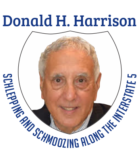
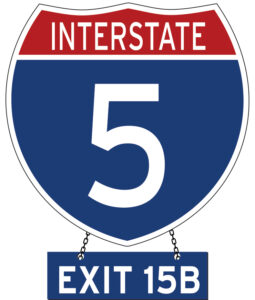 The San Diego Zoo is known as one of the world’s premier institutions for the conservation of endangered wildlife species. Along with its sister San Diego Safari Park, located in the San Pasqual Valley, the San Diego Zoo is considered one of the best, if not the very best, zoos in the world. Of particular Jewish interest is the fact that the San Diego Zoo has served as a big brother to the Tisch Family Zoo in Jerusalem, which also is known as the Jerusalem Zoo. Many of the exhibits in Jerusalem are modeled on those in San Diego and both zoos have received generous financial contributions from San Diegans.
The San Diego Zoo is known as one of the world’s premier institutions for the conservation of endangered wildlife species. Along with its sister San Diego Safari Park, located in the San Pasqual Valley, the San Diego Zoo is considered one of the best, if not the very best, zoos in the world. Of particular Jewish interest is the fact that the San Diego Zoo has served as a big brother to the Tisch Family Zoo in Jerusalem, which also is known as the Jerusalem Zoo. Many of the exhibits in Jerusalem are modeled on those in San Diego and both zoos have received generous financial contributions from San Diegans.
Each year the San Diego Zoo hosts a delegation of young workers and volunteers of the Jerusalem Zoo who want to learn more about zookeeping and animal husbandry. The youths, in the company of an equal number of San Diego youths, visit both the Zoo and Safari Park along with other San Diego sightseeing attractions. Israel has sent to the San Diego Zoo such animals as the bearded vulture, known in Hebrew as a “peres,” and Persian Fallow Deer. When he was a young immigrant from Poland to Pre-State Israel, Szymon Perski decided to Hebraicize his name to “Peres” after spotting one of the large birds flying in the Negev Desert. When Israel sent the peres to San Diego, it good-naturedly named it “Shimon the peres.” Col. Irving Salomon, who had served as a special ambassador to the United Nations along with Eleanor Roosevelt, donated the “turtletorium” 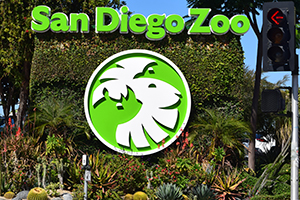 to the Zoo. His daughter, Abbe (Salomon) Wolfsheimer Stutz, later served for eight years as a San Diego city councilwoman.
to the Zoo. His daughter, Abbe (Salomon) Wolfsheimer Stutz, later served for eight years as a San Diego city councilwoman.
Return to Park Avenue and turn right
On the right you will pass the 1910-Herschell-Spillman menagerie carousel that includes 27 horses, 3 chariots, 2 cats, 2 dogs, 2 frogs , 2 giraffes, 2 mules, 2 ostriches, 2 pigs, 2 roosters, 2 zebras and one each of the following animals: camel, deer, dragon, goat, lion, stork, and tiger. While their names may sound Jewish, in actuality Herschell was of Scottish Presbyterian background and Spillman was a German member of United Church of Christ. This illustrates why one should not make assumptions about either Jewish-sounding names or non-Jewish sounding names.
Near the carousel is the Model G16 Balboa Park Miniature Train, which takes young and old passengers over four acres of Balboa Park in a half-mile ride that lasts three minutes. Julie Bornstein informed us that it “was built and owned by my Uncle Sam Bornstein of Kansas City. He had similar trains in Kansas City, Cleveland and Los Angeles. My father was his youngest brother (Leon Bornstein) and when my parents moved to San Diego in 1947, Sam built the San Diego version. I never saw Cleveland’s but his usual model was to build the train next to the city’s zoo to attract zoo goers as customers. When he retired Sam sold the train.” Further along Park Boulevard, you will see the Pepper Grove, which during the 1950s and 1960s was a frequent assembly point for Jewish community picnics.
Beyond that, you will find two former water storage structures, both of which have been converted to museums. The first, covered with murals reminiscent of those in Chicano Park, is the Centro Cultural de la Raza, which celebrates Latino history and culture. The Centro hosts exhibits on a variety of topics relating to Chicano, Mexicana, Latino and Indigenous art and culture. Among previous exhibits was one focusing on Frida Kahlo, whose love for Jews was detailed in a previous chapter.
The next museum is the World Beat Center, which in its dedication to musical percussion and comedy, advocates for “unity within diversity.” Its World Comedy Jam one year featured the comedy of Gary Wolf and Fabio Rabin, a pair of Jews respectively from South Africa and Brazil, as well as that of Chris James from the United Kingdom, Zoltan Kaszas from Hungary, and local comedian Steven Garza. However, the World Beat Center also has ventured into international politics, with presentations on the Israeli/ Palestinian conflict that angered pro-Israel members of San Diego’s Jewish community.
Across Park Boulevard from the World Beat Center is the Veterans Memorial Center Museum, housed in a former Navy chapel that includes, among others, a stained-glass window bearing the Magen David. When the building was used for religious services, it had a turntable altar that enabled chaplains to conduct Catholic, Protestant, or Jewish services. Various groups affiliated with the military such as Jewish War Veterans have space to present small exhibits. One year, the local JWV chapter honored four veterans including Admiral Hyman Rickover, father of the nuclear Navy, Air Force Col. Clark J. Kholos, and Lt. Col Allen R. Miliefsky. A fourth honoree, Army Major Abraham J Baum, whose final years were spent in San Diego County retirement, was cited for his heroism during World War II. According to the citation, “On March 25, 1945, (then)-Captain Baum led an armored force in daring action into enemy territory to liberate Allied prisoners held by the Germans near Hammelburg, Germany. En route, as the column entered the town of Germunden, Captain Baum was wounded by enemy rocket fire. Despite his wound, he continued to lead the force throughout the day and the following night until he was again wounded during action on the outskirts of Hammelburg. Captain Baum’s fearless determination and his inspiring leadership and loyal courageous devotion to duty are in keeping with the highest traditions of the military service.” In another exhibit, a former San Diego County “POW Veteran of the Year,” Sy Brenner, narrates on videotape his experiences as an enlisted man fighting in the Vosges Mountains in France in 1944. He and other members of his unit ran into six German tanks, which promptly blew up the farmhouse in which they had sought to hide. When his body flew to the ground, everyone thought he had been killed, but it turned out he had just been knocked out. “The Germans picked us up, and we had a death march back to Germany which took 12 days without food or water,” he related. “In the prison camp, the German commandant noticed that I was wearing a Red Cross Band. “Ascertaining that Brenner was a medic, the commandant “put me in charge of the surgery, and when I said I wasn’t qualified to be a surgeon, he said, ‘You are qualified to be anything I say you are.’” Brenner’s memoir, The Night I Was Killed, emphasizes the fact that he would have been executed by the Germans, but for the fact that a benefactor from his unit broke off the bottom part of Brenner’s dog tags, which had been engraved with an “H” for “Hebrew.” Luckily for him, the Germans never learned Brenner was a Jew.
From Park Boulevard, turn right on Presidents Way, to the end of the parking lot and then turn left to make a circle around the parking lot on Pan American Road West. Beyond the Puppet Theatre is the San Diego Automotive Museum where one can discover that the Mercedes, which was Adolf Hitler’s favorite car, ironically was named for the daughter of Emil Jellinek, a Jewish car enthusiast who helped develop the brand. Unfortunately, during the Nazi era, the Mercedes company forgot its Jewish roots and cooperated to the fullest with the Third Reich.
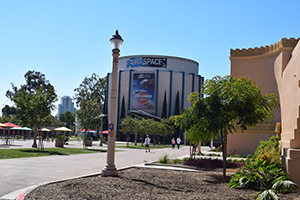
Beyond the far end of the parking lot is the San Diego Air & Space Museum, which traces the development of aircraft and spacecraft, and in rotating exhibits provides insight into the men and women who flew in them. Who can forget Judith Resnik who died with six other astronauts in the explosion of the Space Shuttle Challenger on January 28, 1986? Or Israeli astronaut, Ilan Ramon, who died similarly with six other astronauts in the explosion of the space shuttle Columbia on February 1, 2003? Happily, there have been other Jewish astronauts who have returned safely to earth, including Jeffrey Hoffman, David Wolf, Gregory Chmitoff, Gary Reisman, Mark Lewis Polansky, Scott Jay Horowitz, John Mace Grunsfeld, Martin Joseph Fettman, Jerome Apt, Marsha Sue Ivins, Ellen Louis Shulman Baker, and Jessica Meir. In 2021, 90-year-old Jewish actor William Shatner went up to suborbital space on a short ride on a craft developed by Jeff Bezos. Some of the above-mentioned astronauts reported that Shatner’s character, Captain James T. Kirk on Star Trek, inspired them to go into space.
Further along the perimeter is the shell of the Starlight Theatre. It was once an important summer venue with a quirky tradition of freezing the action on stage whenever an airplane flew low overhead, drowning out the sound. Speaking of “tradition,” imagine an actor portraying Tevye in Fiddler on the Roof being interrupted during a solo by an amber light shining from the back of the amphitheater meaning “Get ready, plane coming.” When a red light would flash, all the actors on stage would freeze until it passed by. Then a green light would signal it was okay to resume the action. “Tradition, Tradition, Tra- (roar of airplane) – dition.” San Diego audiences used to love the interplay between actors and aircraft, offering extra applause for the actor who could best integrate the interruption into the dialogue. Alas, as audiences declined and the theatre became increasingly rundown, the Starlight Theatre stopped its productions.
Next door is the Municipal Gymnasium, which routinely hosts basketball and volleyball tournaments, but was given over in 1999 to a remarkable exhibition titled “World War II Through Russian Eyes,” in which the battles of the Eastern front were recounted and the artifacts seized by victorious Russian troops at the end of the war from Hitler’s bunker and from the Reich Chancellery were displayed.
Near the end of the circle is the new Comic-Con Museum, started by the same people who each summer (except during the pandemic) sponsored the mega Comic-Con extravaganza at the San Diego Convention Center, attended by more than 130,000 exhibitors and visitors, many of them dressed in the costumes of their favorite Comic-Book characters. Perhaps the most famous and durable super-hero was Superman, who was conceived prior to World War II by two Jewish friends, Jerry Siegel and Joe Shuster. Other Jews whose careers propelled the comic book and super-hero movie industry included Milton Finger and Bob Kane, co-creators of Batman; Stan Lee and Jack Kirby, who collaborated in the creation of the Hulk, Thor, Iron Man, X-Men, Doctor Doom, Uato the Watcher, Magneto and Black Panther among others. Lee also was involved in the creation of Spider Man. Another Jewish pioneer in the comic book industry was Will Eisner, a co-creator of the Spirit, and a pioneer in longer illustrated stories known as graphic novels. Several of his subjects dealt with Jewish history and the portrayal of Jews in literature. The works included A Contract With God and other Tenement Stories; Fagin the Jew (rebutting the Charles Dickens’ stereotype) and The Plot: The Secret Story of the Protocols of the Elders of Zion, explaining the antisemitic hoax concocted by Czarist agents. The Eisner Award is conferred upon comic book industry professionals who have advanced the industry. When the Comic-Con Museum had its “soft opening” in November 2021, it featured an 80-year retrospective on the “Archie” comics, which were co-created by Bob Montana and John L. Goldwater, a Jewish distant cousin of U.S. Senator Barry Goldwater. Another featured exhibit was about Star Trek creator Gene Roddenberry, whose original television series featured Jewish actors William Shatner as Captain Kirk and Leonard Nimoy as Mr. Spock.
Prior to its incarnation as the Comic-Con Museum, the Federal Building was the longtime home of the San Diego Sports Museum and Hall of Champions. Its Jewish founder, Robert “Bob” Breitbard, was perhaps one of the greatest sports fans anywhere. His memorabilia collection included one of the bats former San Diegan Ted Williams used with the Boston Red Sox during his best American League season, a racket swung by Maureen Connolly at Wimbledon, and other such artifacts. Several Jewish athletes were inducted into the Hall of Champions including two former members of the San Diego Chargers, coach Sid Gilman and offensive lineman Ron Mix. One of the most interesting exhibits held in the Hall of Champions was a national touring exhibit on the 1936 Olympics, which were held in Berlin in what Hitler hoped would be a showcase for “Aryan superiority.” It was at this Olympics that the African-American track star Jesse Owens won four gold medals, much to Hitler’s dismay. At the exhibit, Marty Glickman told of his own experiences at the 1936 Olympics, especially his disappointment caused by his last-minute removal, along with fellow Jewish athlete Sam Stoller, from the 400-meter relay – a surrender to Hitler’s notorious antisemitism. Glickman went on to become a famous sports broadcaster, calling the play-by-play for New York Knicks basketball and New York Giants football.
Bob Breitbard was responsible for the construction of the Sports Arena in San Diego’s Midway district and owned two San Diego sports teams–the San Diego Rockets of the National Basketball Association and the San Diego Gulls of the Western Hockey League. The Rockets eventually were sold and moved to Houston, Texas. The Gulls played from 1966 to 1974, when they were replaced by the 1974-1977 San Diego Mariners, owned briefly by McDonald’s founder Ray Kroc.
Cross Presidents Way and continue straight on Pan American Road East
On the left is a group of international cottages, known collectively as the House of Pacific Relations – “Pacific” in this case meaning “peaceful” rather than referring to the ocean beyond San Diego’s shoreline. There are 32 cottages representing 32 cultures including Israel, which is one of the original cottages built in 1948 at the suggestion of Eleanor Roosevelt, and the House of Palestine, which opened in 2021. May the two houses find a way to the pacific relations thus far unattained by their namesakes! Other cultures at The House of Pacific Relations include Chamorros (Guam), China, Colombia, Czech and Slovak Republics, Denmark, England, Finland, France, Germany, Hungary, India, Iran, Ireland, Korea, Mexico, Norway, Panama, Peru, Philippines, Poland, Puerto Rico, Scotland, Spain, Sweden, Turkey, Ukraine, and United States. Nations that were awaiting cottages in 2021 were Austria and Lebanon. Souvenirs from many of them may be found at the Hall of Nations located among the cottages.
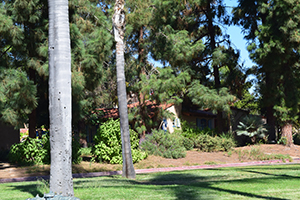
The two-room House of Israel cottage includes exhibits about life in Israel, and a counter from which every guest typically is offered a taste of bourekas by weekend volunteers. The House of Israel has been visited by some well-known Israelis among them Mayor Ron Huldai of Tel Aviv and Yoni Peres, son of the late Shimon Peres, who served his country as a prime minister and president. One exhibit focused on the work Israel does in agriculture, water conservation, technology and other areas of innovation. Visitors who toured it were rewarded with a tomato plant grown from Israeli seed. On other occasions, the House of Israel has hosted art exhibitions reflecting on Israel. Exhibitors included Jews, Christians and Muslims from the United States and from a variety of countries on six different continents.
Continue on Pan American Road East
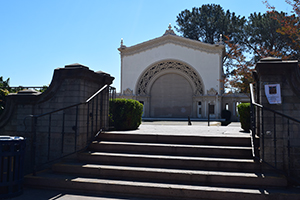
On the right is the Spreckels Organ Pavilion, boasting 5,098 pipes in 81 ranks, which qualified it since its first concert on New Year’s Eve, December 31, 1914, to be called “the largest outdoor organ in the world.” It was a gift from brothers John D. and Adolph Spreckels to San Diego, in time for the Panama-California Exposition which opened on January 1, 1915. As the brothers were members of the famous Spreckels sugar family, it is often joked that the organ has the “sweetest sound” of all. The Organ Pavilion is best known as a venue for free Sunday afternoon concerts in its 2,500-seat amphitheater, but it also known as a place for large-scale celebrations including graduation ceremonies and even outdoor Simchat Torah services celebrated by Congregation Beth Israel when it was located at 3rd and Laurel Streets, just a few blocks from the park. On New Year’s Day 1931, the San Diego Jewish community hosted an outdoor reception attended by 8,000 people for Nobel Prize-winning theoretical physicist Albert Einstein, who had arrived on a world cruise of the S.S. Belgenland. Nine-year-old Ruth Moscowitz of Tifereth Israel Synagogue presented Einstein with a mezuzah; Ruth Levi presented him with a plaque inscribed with one of Einstein’s own quotations: “Before God we are all relatively equally wise or equally foolish;” Rabbi M. A. Firestone of Tifereth Israel addressed him in Hebrew, and Rabbi H. Cerf Strauss of Beth Israel opened the proceedings with an invocation. Myron Lustig, a member of Beth Israel who also was a reporter for The San Diego Union, participated in a shipboard interview of Einstein and his second wife, Elsa, resulting in the opening paragraph: “Professor Einstein may be able to juggle universes, but it takes his frau to perform such heroic tasks as safeguarding health and making him wear socks.”
Follow Pan American Road East around the front of the Organ Pavilion to the Japanese Friendship Garden.
A Tea Pavilion which serves sushi and other typical Japanese foods sits atop a 12-acre valley that has been converted into a Japanese Friendship Garden in a tribute to San Diego from its Sister City of Yokohama, Japan. The garden, with its koi ponds, statuary, Japanese-style buildings, and stone arrangements is a venue for horticultural classes, festivals, and exhibits.
Continue on the road passing the back of the El Cid Statue on its right side.
Sculptor Anna Hyatt Huntington created in 1927 the 23-foot-high statue of El Cid Campeador, which was installed in its present location three years later. Rodrigo Diaz de Vivar (1043-1099) earned the honorary title and a place in Spain’s pantheon of heroes while serving as a Castilian knight and commander in a war against the Moors. Later as a mercenary fighting for Moorish clients, his reputation as a fighter grew. El Cid is a Spanish transliteration of the Arabic phrase al-Sayyid, which means “The Master” and Compeador is an honorific title meaning master of the battlefield. The legendary figure’s warhorse was a stallion named Babieca. In 1095, El Cid seized control of Valencia on Spain’s Mediterranean coast, ruling the city autonomously. Among the laws he implemented were restrictions on Jews in their relations with Muslims. For example, Jews were forbidden to acquire Muslim prisoners of war nor to have any positions of authority over Muslims and their property.
The Spanish Colonial Style Buildings facing each other on either side of the road are the House of Hospitality on the right, and the House of Charm on the left, their names given at the 1935 California Pacific International Exposition. A major feature of the House of Hospitality is the Prado at Balboa Park, operated by the Cohn Restaurant Group, which also administers the Tea Pavilion. Jewish community members David and Lesley Cohn started in the San Diego restaurant business in 1981 with a diner and by 2021 had grown the group to over 24 restaurants in Southern California and Maui. Among some other San Diego favorites in the Cohn Restaurant Group are Corvettes, with a car and rock n’ roll theme at Liberty Station (the former Naval Training Center) and Island Prime, located on Harbor Drive with a good view of San Diego Bay and Coronado.
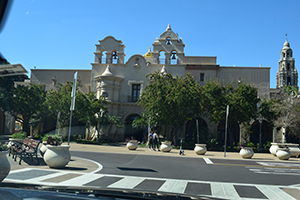
The House of Charm houses the Mingei International Museum. In front of it is the fanciful Nikigator, which children ae encouraged to climb on. It is a creation of the late sculptor Nikki de Saint Phalle, who also created a menagerie of animal sculptures for a Noah’s Ark exhibit at the Jerusalem Zoo. One of the Mingei’s previous exhibits was “Israel: 70 Years of Craft and Design,” which had a representation of crafts and arts of Ashkenazi, Sephardic, Yemenite, Christian and Muslim origin. The Mingei’s gift shop collects and sells crafts from all over the world. On one occasion, there was a Mexican chanukiah, featuring a Star of David, and a “Tree of Life” pin of unknown origin.
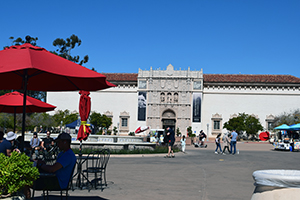
Beyond these two houses, the roadway turns off to the left, leaving behind it a large pedestrian mall fronted by the San Diego Museum of Art. The museum’s outdoor sculpture garden includes several works by Jewish artists, including “Night Presence II” by Louise Nevelson; “Sonata Primitive” by Saul Baizerman, “Aim I” by Alexander Liberman and “Odyssey” by Tony Rosenthal. The art collection inside includes paintings and drawings by such well-known artists as Marc Chagall (“Nude and Vase of Flowers”); Amedeo Modigliani (“Blue Eyed Boy; Caryatid), and Camille Pissarro (“Personages and Studies of Heads) as well as paintings based on the Hebrew Bible, including Francesco Maffei’s “Joseph Sold by His Brothers” and “David with the Head of Goliath” by Massimo Stanzione. Over the years, the museum has addressed various Jewish subjects including “The Precious Legacy” exhibit featuring Jewish ceremonial objects looted during the Holocaust by the Nazis and later housed at a state museum in what is now the Czech Republic. More recently, the museum mounted a retrospective of the drawings and paintings of the late Harry Sternberg, who had retired to San Diego County. Of note, the San Diego Museum of Art grew out of the San Diego Fine Arts Society, which Julius Wangenheim had helped to found. Wangenheim, who has a middle school named for him in San Diego, was one of the San Diego citizens who militated as early as 1901 for turning the park into a cultural treasure house.
To the right of the San Diego Museum of Art is the Timken Art Gallery, which in 2021 was granted $100,000 to upgrade its heating, ventilation, and air conditioning system by the Helen Frankenthaler Foundation, named for the late Jewish abstract expressionist artist. Among events held at the Timken was a multi-panel exhibit sponsored by the Consulate-General of the Netherlands and the Anne Frank House in Amsterdam. The panels related the story of the Holocaust as it impacted Anne’s family in Amsterdam and how they survived for several years before capture by residing in a secret annex. The panels also told the story of The Diary of a Young Girl that Anne wrote while in hiding.
Between the two art museums, there is a view to the wooden lath structure known as the Botanical Building, which boasts inside more than 2,100 tropical plants. The Botanical Building and the Lily Pond in front of it are among the most photographed sites in the park. Outside is also a popular venue for street performers who obtain special permits to amaze with juggling, magic, clowning, and other forms of entertainment.
Between the Timken Art Gallery and the House of Hospitality is a walkway known as El Prado, which passes on the left a walkway to the aforementioned Botanical Building. El Prado leads to the large and popular Bea Evenson Fountain, named for a San Diego citizen who made care and advocacy for the park’s development her life’s work. The building on the right side of the walkway beyond the House of Hospitality is the Casa de Balboa, which is the home to three museums: the Museum of Photographic Arts, the Model Railroad Museum, and the San Diego History Center. All three have Jewish stories to tell.
Award-winning photographer Arthur Ollman, a Jewish community member, was the founding director of the Museum of Photographic Arts in 1983. Serving in that capacity until 2006, he helped shape the museum with his expertise as a master of extra-long-exposure photographs as well as his association with Ansel Adams and other internationally known photographers. The museum’s permanent collection includes the works of numerous Jewish photographers including Bruce Davidson, Neil Folberg, Robert Frank, Lee Friedlander, John Gutmann, William Klein, Arnold Newman, Alfred Stieglitz, Paul Strand and Roman Vishniac. Jews also have been subjects of photographs in the permanent exhibit, including three of Marilyn Monroe by Phillipe Halsman and another by Arnold Newman. Short-term exhibits have included a Yousuf Karsh portrait of Marc Chagall juxtaposed with one of his characteristic floating figures, and a 1972 portrait by Richard Avedon of an unsmiling Groucho Marx. In 2019 the works of photographer Bern Schwartz, who utilized a hidden shutter release during conversations with celebrities, included Lord Mountbatten, Prince Charles, novelist Ralph Ellison, painter-photographer David Hockney, supermodel Twiggy Larson, sculptor Henry Moore and fashion designer Zandra Rhodes.
The Model Railroad Museum boast more than 27,000 square feet of trains, trestles, tracks and stations with permanent miniature exhibits bearing such names as “The Cabrillo & Southwestern,” “The San Diego & Arizona Eastern;” “Southern Pacific on the Tehachapi Pass;” “Pacific Desert Lines;” “The Toy Train Gallery” and “The Centennial Railway Garden.” The museum also has display boards about railroad history, with one focused on the story of Leah Rosenfeld. She had more seniority than men who applied for the job of station agent in Saugus, California, but was passed over by Southern Pacific on the grounds that California law prohibited a woman from working more than 8 hours a day or lifting more than 25 pounds. After the federal Civil Rights Act of 1964 prohibited discrimination on the basis of race or sex, Rosenfeld filed a complaint with the Equal Employment Opportunities Commission, eventually leading to California’s Protective Laws being declared unconstitutional, benefitting not only women in California but by precedent women throughout the U.S.
The San Diego History Center held a year-long exhibition, “Celebrate San Diego! The History & Heritage of San Diego’s Jewish Community,” curated by Prof. Joellyn Zollman along with a companion exhibit on the art of San Diego Jewish artists Belle Baranceanu, Maurice Braun and Harry Sternberg. A book, Celebrate, Commemorate: The History and Heritage of San Diego’s Jewish Community and a video by Isaac Artenstein, To the Ends of the Earth: A Portrait of Jewish San Diego were issued in connection with the exhibit. Both are offered for sale in the museum’s gift shop. Immediately following that exhibition, another one focusing on San Diego’s gay community was curated by Lillian Faderman, author of The Gay Revolution: The Story of the Struggle. Among the multi-faceted displays in the exhibit were materials tracing the career of Civil Rights icon Harvey Milk, who spent time in San Diego as a Navy lieutenant junior grade. (See previous chapter on USNS Harvey Milk) and references to cross-dressing long being considered a form of entertainment as in the 1959 Billy Wilder comedy Some Like It Hot. In the film, Tony Curtis and Jack Lemmon escape gangsters by pretending to be show girls, while falling in love with Marilyn Monroe who supposedly was clueless about their real gender identity. [See Previous Chapter on the Hotel del Coronado].
Across El Prado from the Casa de Balboa is the Casa del Prado, the home to San Diego’s Youth Symphony founded in 1945 by conductor Leo Scheer. The Junior Theatre has produced a wide variety of plays, including Arnold Lobel’s A Year With Frog and Toad; Civic Youth Ballet; Botanical Garden Foundation; and Floral Association.
Continue on El Prado to the Bea Evenson Fountain
The buildings on either side of the large fountain are dedicated to science. To the right is the Reuben H. Fleet Science Center, named for America’s first air mail pilot who founded Consolidated Aircraft in San Diego, which after a merger became known as Convair. The building to the left is the San Diego Natural History Museum.
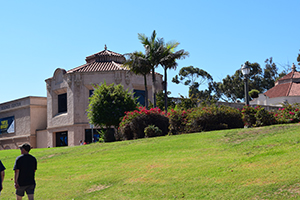
One of the popular features of the Reuben H. Fleet Science Center is the Eugene and Marilyn Heikoff Giant Dome Theater, named for a former Linkabit facilities manager and president of Congregation Beth Israel and his wife. Jeffrey Kirsch, Ph.D., the museum’s former executive director for 30 years until 2013, helped to pioneer large-format films for teaching science. His IMAX credits as a producer include The Discoverers; To the Limit; Chronos; and Ring of Fire. His successor, Steven Snyder, Ph.D., has brought science to the outside community with such programs as “Two Scientists Walk Into a Bar” which on a quarterly basis places 50 scientists in 25 bars throughout San Diego County, and “52 Weeks of Science” bringing science and technology events to local neighborhoods. Elsewhere in the Science Center is a board punched with holes which when viewed from the proper distance looks like Albert Einstein. The Science Center explains, “Computer monitor screens that convey vast amounts of detailed information, have anywhere from a few hundred thousand to over a million pixels, and each pixel can have 256 levels of brightness. Compare this with the information contained in the Einstein portrait made of holes; 1200 pixels, each with 9 levels of brightness. That we can recognize Einstein’s face with so little information points out how remarkable are the human powers of pattern recognition.” The museum also has hosted Jewish community events, such as “Hanukkah Under the Stars” in 2010 when the IMAX Theatre, which is also a planetarium, projected the skies over Jerusalem as they would have appeared to the Maccabees in 165 BCE.
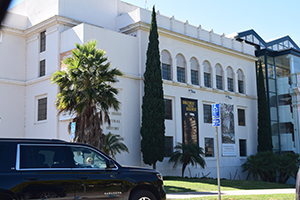
The San Diego Natural History Museum counted members of San Diego’s early Jewish community among its stalwart contributors. Among these especially were the Klauber family and Samuel Fox. One exhibit, a cross section of a California redwood, has proven to be a wonderful way to explain to Jewish children the concept of Tu B’Shevat, the birthday of the trees. In 2018, Jewish artists Larry and Debbie Kline were engaged as artists in residence to engage in activities merging the arts and science. They chose to update the portfolio of ornithologist John James Audubon by creating Audubon-like prints of birds known to be extinct or in imminent danger of their demise. Backgrounds of the drawings suggest what caused their extinction. For example, one of their drawings was of an esquimaux curlew, which lost its habitat. In the background of that drawing is a picture of a man plowing a field. Another was of the pinnated grouse, which hunters used to shoot for sport, rather than for eating. Piles of them dead often were left on the ground, according to the Klines.
On the back side of the Natural History Museum is the giant Moreton Bay Fig Tree, and behind that the studios of working artists at the Spanish Village Art Center. According to the official Balboa Park Guide, it is the home to a collective of 200 artists including Independently juried local painters, sculptors, metalsmiths, jewelry designers, clay artists, gourd artists, photographers, printmakers, fiber artists, basket makers, mixed-media artists, glass artists, and enamel artists. Both venues crop up occasionally in San Diego County Jewish news. For example, in 2011, during Israel’s war with Gaza (Operation Cast Lead), pro-Israel demonstrators assembled at the Moreton Bay Fig Tree for a march in support of the Israelis. In 1957, when the Women’s Division of the United Jewish Appeal was raising money, it was noted that 10-year-old Judy Karp, daughter of Mr. and Mrs. Louis Karp made a $3 contribution of her prize money in an art contest held at the Spanish Village.
Retrace your steps back to the Plaza.
Across from the sculpture garden of the San Diego Museum of Art is the Institute of Contemporary Art, also known as the San Diego Art Institute, which highlights the work of local artists. Similar to the Klines at the Natural History Museum, Becky Guttin merged science and art in a project in which she drew on the knowledge of Dr. LuLin Jiang about Alzheimer’s Disease. Jiang told Guttin that Beta Amyloidal, a protein, accumulates in the brain, similar to dust spreading over a room. The exhibit is inside a rectangular boundary of aluminum blocks intentionally marred with leftover colored ink. Guttin placed a tree dotted with debris symbolizing the amyloid plaques (dust and dirt) found in a brain afflicted by Alzheimer’s Disease. In contrast, she placed under the tree and inside a companion aluminum rectangle colorful grass representing clean cells unaffected by Alzheimer’s. Flowers in the installation symbolized growth and hope.
Walk west toward the Laurel Street Bridge
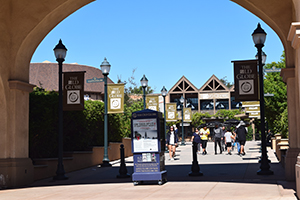
Between the Sculpture Garden and the Museum of Us, which is located in the tall California Building, is a walkway leading to the three stages of the Old Globe Theatre. Rated as one of the best regional theaters in America, the Old Globe produces both Shakespearean and contemporary plays. Some dramatic works having their premiers at the Old Globe go on to Broadway. Craig Noel, who had acted at the Old Globe in 1937, went to Hollywood after World War II where he conducted the screen test for Marilyn Monroe. In 1947, he was called back to San Diego to be the Globe’s first full-time director. Among well-known performers who were given early starts by Noel were Marion Ross, Dean Jones, and Jon Voight. Other well-known performers in different productions of the Old Globe included Christopher Reeve, Leonard Nimoy, Patrick Duffy, and David Ogden Stiers. When an arsonist destroyed much of the Old Globe Theatre in 1978, Hollywood had a telethon to raise funds for reconstruction. Among performers: Charlton Heston, Victor Buono, Desi Arnaz, Harvey Korman, Meredith Baxter Birney, Ray Bradbury, Hal Holbrook. Christopher Reeve (“Superman” of the movies) sold kisses. The Old Globe reopened in 1982, a year before the other superlative regional theatre in San Diego, the La Jolla Playhouse had a rebirth. The two organizations spurred each other to greatness. In 1984, another fire destroyed the Festival stage, prompting Sol Price, founder of the Price Clubs, to spearhead fundraising for a replacement. In 1986, the Globe produced Stephen Sondheim’s and James Lapine’s Into the Woods, a musical based on fairy tales that subsequently made it big on Broadway. The following year, Neil Simon’s Rumors premiered at the Globe, and in 1990 he brought Jake’s Women to the Globe, which Noel’s protégé and successor as artistic director, Jack O’Brien directed. The rewritten play opened on Broadway two years later staring Alan Alda. In 1991, O’Brien staged Shakespeare’s Merchant of Venice, starring Hal Holbrook. Though he tried to soften the antisemitic depiction of Shylock, many in the Jewish community felt O’Brien had not succeeded. However, a residue of good feeling about the Globe enabled the institution to weather the storm. In 1995, actor John Goodman starred as Falstaff in the Globe’s production of Henry IV, and on the Globe went into the 21st century from success to success as one of San Diego’s most beloved institutions. Hazak! Hazak!
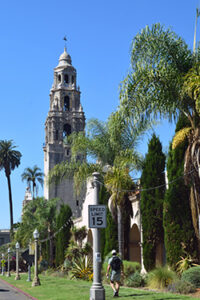
Balboa Park’s signature building with a belltower and dome is the former Museum of Man, now known as the Museum of Us. The inscription in Latin at the base of the California building is a translation from Deuteronomy 8:8: “A land of wheat and barley and vines and fig trees, a land of olive trees and honey.” Among the museum’s permanent collection are representations of life cycle events of many religions, including the bar or bat mitzvah ceremony of Judaism. Among recent powerful exhibits under the administration of Executive Director Micah Parzen was one titled, “Pets, Pests, and on Plates,” examining humanity’s interaction with animals. One portion dealt with the cruelty of raising animals for human consumption. It showed dairy cattle herded onto huge roundtables to facilitate factory-style milking; a tractor-like vehicle vacuuming up live chickens like so much dust on a rug, and a mother pig being confined to a space so tight, she could not even move as she suckled her young. Such mistreatment conflicts with Judaism’s values. While recognizing that people will eat animals, Judaism emphasizes the necessity to be kind to them while they are alive. For an animal to be kosher to eat, it must be slaughtered as painlessly as possible. According to Torah, when God chose Moses, God explained: “Since you are merciful to the flock of a human being, you shall be the shepherd of My flock, Israel.”
Continue west on El Prado to the archway on the eastern end of the Laurel Street Bridge.
Now that we have toured Balboa Park’s museums, perhaps a little bit of the park’s history is in order.
In 1867, Joseph Mannasse, one of San Diego’s original Jewish settlers, was a member of the city Board of Trustees that decided some city land ought to be set aside for a large park. The trustees voted to authorize creation of a committee to search out just the right spot.
The committee reported back the following year, but by that time Mannasse’s one-year term on the Board of Trustees was over. However, his friend and brother-in-law, Marcus Schiller, had taken his place on the three-member board. Schiller voted in 1868 to put aside the land that became Balboa Park. Schiller later would become the first president of Congregation Beth Israel.
A plaque on the western side of the arched entryway reads: “Balboa Park: To commemorate the foresight and civic wisdom of the founders of Balboa Park this tablet is erected by the people of San Diego. May 26, 1868, on the petition of Alonzo E. Horton and Ephraim W. Morse, these 1600 acres of Pueblo lands were dedicated by the Trustees of the City – Jose Estudillo, Marcus Schiller, Joshua Sloane – to be forever a public park. In the year 1928 the City gratefully honors the memory of these citizens and officials of 1869.”
On top of the structure, looking down on the traffic, are two figures representing the Atlantic and Pacific Oceans. The spot where their fingers touch symbolically represents the Panama Canal.
In 1909, the leadership of the City of San Diego was quite excited about the construction of the Panama Canal. They knew that when the canal was finished, San Diego would become the first U.S. port north of the canal on the West Coast. They thought that if people could only be made aware of how beautiful a place San Diego was, perhaps the railroads could be persuaded to make San Diego an alternative western terminus for a transcontinental railroad! In such a case, San Diego could become a leading entrepot of the world.
With such visions in their eyes, a committee was organized to stage the Panama-California Exposition in 1915, the year the Canal was scheduled to open, as a way of publicizing San Diego’s potential. Among the committee’s board of directors were three prominent members of the Jewish community: Julius Wangenheim, Simon Levi and L.A. Blochman.
Up until nearly the opening, the park had been known simply as City Park, a name considered hardly grand enough for such an important enterprise. So, a contest was held, and the winning suggestion for a name was Balboa Park — after the Spanish explorer Vasco Nunez de Balboa, who in 1513 became the first European explorer to cross the Isthmus of Panama from the Atlantic Ocean to the Pacific Ocean.
Balboa never laid eyes on San Diego. He died in 1519, and San Diego was not “discovered” by a European explorer until 1542, when Juan Rodriguez Cabrillo claimed it for Spain. Of course, the Kumeyaay people who had lived in San Diego since prehistoric times had discovered San Diego far earlier. Nevertheless, in time for the opening of Balboa Park, the Cabrillo Bridge (now called the Laurel Street Bridge) was built from 6th Street across a canyon through which State Highway 163 passes. That section of the highway is officially named the Cabrillo Freeway.
As it turned out, the railroads decided that there was no need to develop San Diego as an alternative to their existing late 19th century terminus in Los Angeles, notwithstanding the attractiveness of the Port of San Diego. The decision in no small measure was due to the rugged topography east of San Diego. Thus Los Angeles, which up to then had been a rather small town up the coast from San Diego, was destined to grow into a major metropolitan area of California.
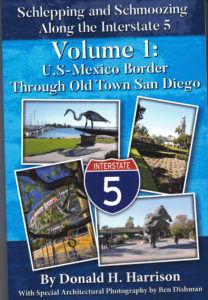 Although San Diego did not become the great trading center it had hoped to be, the buildings constructed for the Exposition created the nucleus of a park that today has one of the greatest collections of museums anywhere and in one of the world’s most agreeable settings. More buildings were added in 1935 when the state held the California-Pacific Exposition.
Although San Diego did not become the great trading center it had hoped to be, the buildings constructed for the Exposition created the nucleus of a park that today has one of the greatest collections of museums anywhere and in one of the world’s most agreeable settings. More buildings were added in 1935 when the state held the California-Pacific Exposition.
Some of the structures that remain from the 1915 exposition are the California Building, today home to the Museum of Us; the Organ Pavilion, the Cabrillo Bridge, and the Botanical Building. The rest of the buildings are either from the 1935 Exposition or rebuilt even later.
*
Next Sunday, May 29, 2022: Exit 15B (B Street): San Diego City College
This story is copyrighted (c) 2022 by Donald H. Harrison, editor emeritus of San Diego Jewish World. It is an updated serialization of his book Schlepping and Schmoozing Along Interstate 5, Volume 1, available on Amazon. Harrison may be contacted via donald.harrison@sdjewishworld.com
Excellent description, Don, of our wonderful Balboa Park and its many attributes.